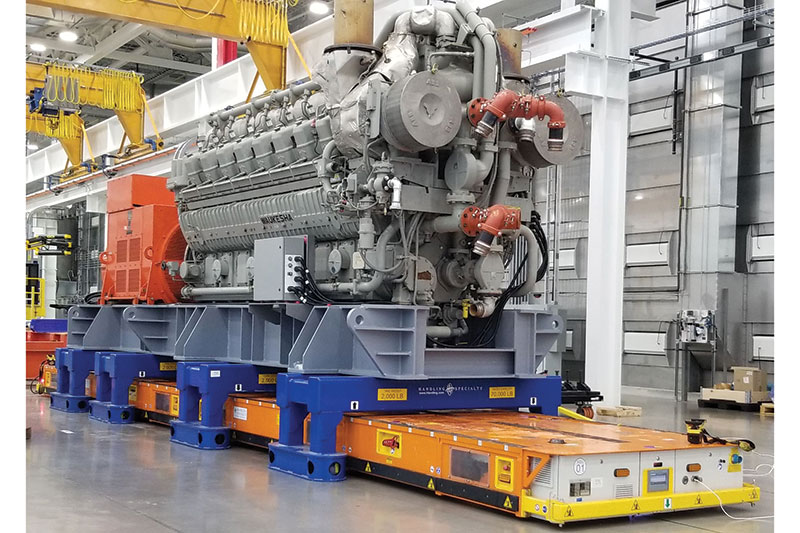Handling Specialty, an equipment manufacturer, had a gas compression industry-based client that needed a non-intrusive way to move massive gas engines around its manufacturing facility.
Company engineers designed an easy-to-install solution: a rugged automatic guided vehicle (AGV) system that provides reliable tracking and guidance, flexible steering and synchronized lifting behavior.
To simplify integration and data collection, Handling Specialty chose to outfit the operator-controlled system with sensing components from an industrial automation products manufacturer, particularly for factory automation and process automation applications.
The AGV solution is available in two models: one with four-wheel sets and another with six-wheel sets. Each set consists of two wheels and a rotating axis, which offer the unit considerable steering flexibility, entirely possible with the help of cable-pull rotary encoders that provide angular position information. This information can be used to initiate a variety of steering modes, including traditional steering (forward and reverse), side steering (all wheels orient to 90 degrees for sideways movement) and zero-turn steering (the vehicle rotates in place).
An optical read head guides the AGV through the plant by tracking the system’s position, using a line painted on the factory floor. With ±0.008-inch resolution and a ±10-degree alignment tolerance, the read head verifies the position of the AGV and relays it back to the control system. When the AGV needs to navigate to one of the plant’s test cells, photoelectric distance sensors monitor the system’s forward and reverse positions, relative to each cell.
The AGV is outfitted with a hydraulic platform, used to lift and lower the plant’s heavy gas engines during production. The built-in platform can lift equipment up and down by 4 inches, and the lifting capacity differs by model. The version with four-wheel sets has four corresponding cylinders and is capable of lifting 40,000 pounds, while the model with six-wheel sets and six cylinders can lift up to 100,000 pounds. Distance measurement sensors monitor the lifting movement of both versions to ensure the platform is level.
One of the most unique features of the 6-cylinder AGV is its ability to operate in tandem with another 6-cylinder system. This not only increases the AGV’s lifting capacity to 200,000 pounds, but it also requires 12 cable-pull rotary encoders and 12 distance measurement sensors—24 motors in total—to work in parallel to provide feedback to the system.
Pepperl+Fuchs
(330) 486-0002
Article topics









